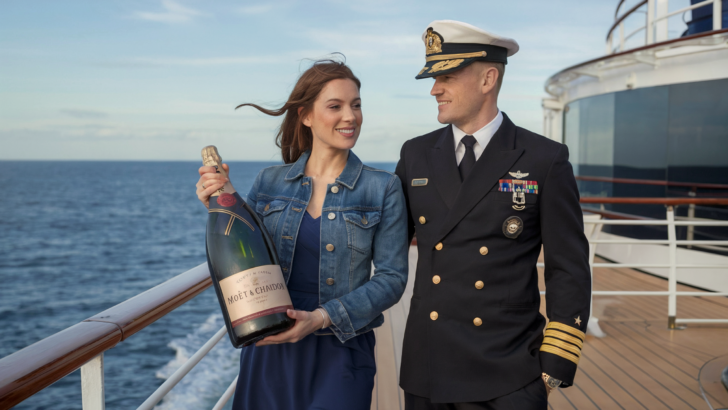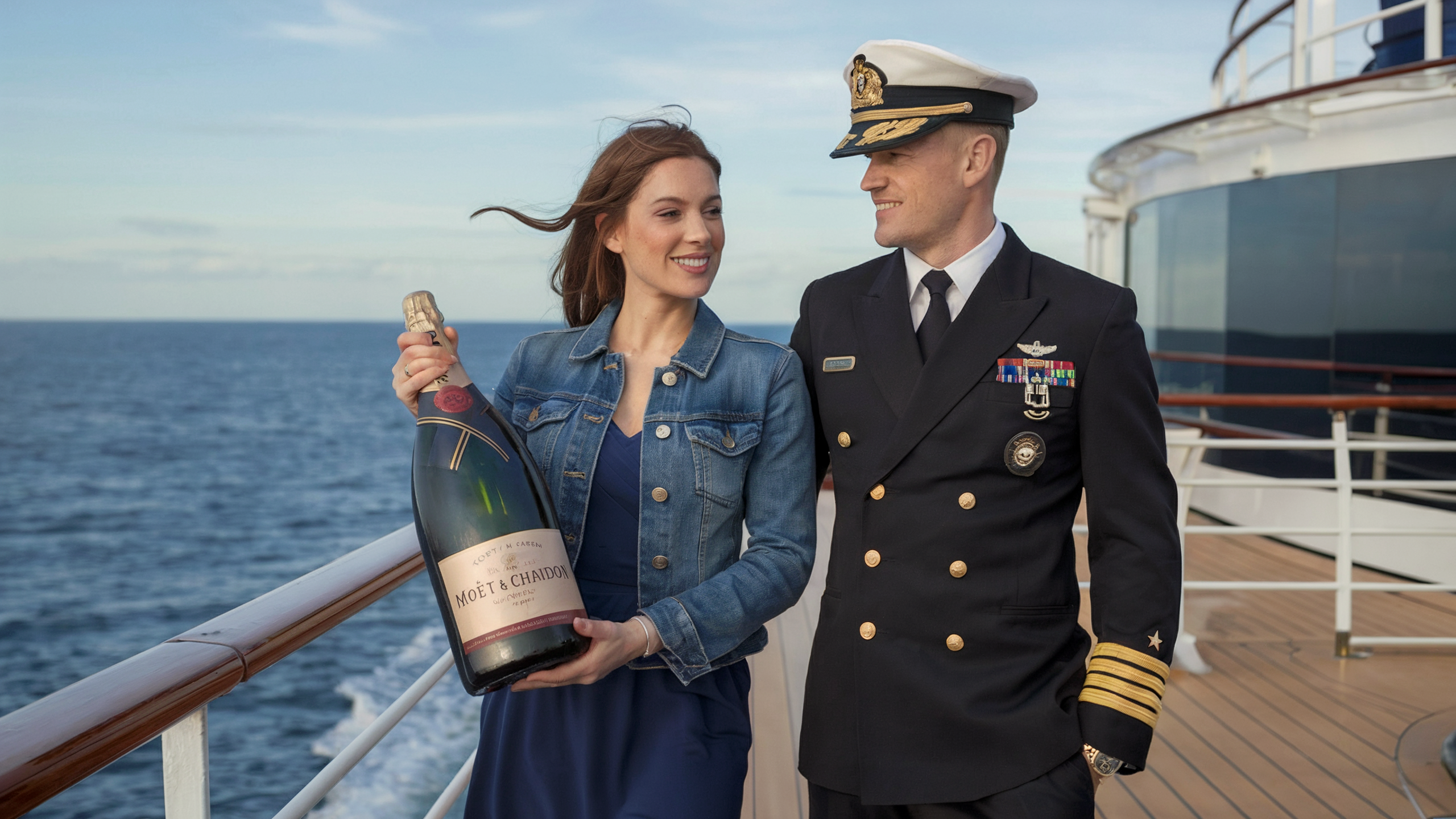When you book a cruise, you’re not just stepping onto a floating hotel – you’re becoming part of a rich maritime tradition. One of the most intriguing aspects of this tradition is the role of the cruise ship godmother. But what exactly is a cruise ship godmother, and why is this ceremonial position so important in the nautical world?
Let’s dive into the world of cruise ship godmothers and explore this unique nautical custom.

The Role of a Cruise Ship Godmother
A cruise ship godmother is much more than just a figurehead. Her role is steeped in maritime tradition and carries significant symbolism:
Blessing the ship: The godmother’s primary duty is to bestow good fortune on the vessel and all who sail in her.
Christening ceremony: She officially names the ship and breaks a bottle of champagne against the hull.
Ongoing connection: Many godmothers maintain a relationship with “their” ship, sometimes sailing on inaugural voyages or special cruises.
Think of a cruise ship godmother as a protective spirit for the vessel. It’s a role that’s taken quite seriously in the maritime world, even in our modern age.
Historical Significance
The role of ship godmothers has its roots in centuries-old maritime traditions, where blessings were invoked to safeguard vessels. While ancient cultures like the Babylonians, Greeks, and Romans performed rituals to protect their ships, the modern concept of a ‘godmother’ is a more recent tradition that emerged in the 19th century, becoming formalized as shipbuilding grew in prominence. Over time, this ceremonial role evolved, blending old-world blessings with the pageantry we see today.
Ancient times: Babylonians, Greeks, and Romans would call upon the gods to protect their ships.
Middle Ages: Religious figures would often bless ships before their voyages.
18th-19th centuries: As naval power became crucial to nations, royalty began taking on the role of ship sponsors.
20th century onwards: The role expanded to include celebrities, notable public figures, and even fictional characters.
Who Gets Chosen as a Godmother?
Cruise lines put a lot of thought into selecting their godmothers. The choice often reflects the ship’s character or the cruise line’s values.
Common categories include:
- Royalty: Members of royal families are popular choices, bringing prestige and a sense of tradition.
- Celebrities: Actors, musicians, and other stars add glamour and media attention.
- Public figures: Politicians, athletes, or philanthropists who align with the cruise line’s image.
- Fictional characters: Some lines have chosen beloved characters to appeal to family cruisers.
Notable Cruise Ship Godmothers
Let’s look at some famous godmothers who have christened cruise ships:
Queen Elizabeth II: Christened several Cunard ships, including Queen Mary 2 and Queen Elizabeth.
Oprah Winfrey: Godmother to Holland America’s Nieuw Statendam.
Sophia Loren: Has christened multiple MSC Cruises ships.
Pitbull: Named godfather (a rare, but growing trend, as the tradition typically favors women) of Norwegian Escape. While it’s unusual for men to take on this role, Pitbull’s selection reflects Norwegian’s energetic, fun-loving brand.
Princess Fiona from Shrek: Godmother to Royal Caribbean’s Allure of the Seas.
Meghan Trainor: Godmother to Royal Caribbean’s Utopia of the Seas.
Each of these choices says something about the ship’s identity and target audience. For instance, having Oprah as a godmother signals a focus on enrichment and personal growth, while a character like Princess Fiona highlights family-friendly fun.
The Christening Ceremony
The christening ceremony is the highlight of a ship’s launch, and the godmother plays the starring role. While each cruise line may add its own unique touches, here’s what typically happens:
Speeches: Cruise line executives often make speeches, and in some cases, the godmother gives one as well, though her primary role is to bless the ship.
Blessing: The godmother officially blesses the ship, often with a prepared statement.
Naming: She declares the ship’s name “and all who sail in her.”
Bottle breaking: The climax of the ceremony is when the godmother breaks a bottle of champagne against the ship’s hull.
Champagne Bottle: Fact vs. Fiction
There are some common misconceptions about the champagne bottle ritual:
Myth: The bottle is always thrown by hand.
Reality: Most modern ceremonies use a mechanical device to ensure the bottle breaks.
Myth: It’s bad luck if the bottle doesn’t break.
Reality: While sailors are superstitious, most view an unbroken bottle as simply embarrassing, not unlucky.
Myth: They use cheap champagne.
Reality: Most cruise lines use high-quality champagne, often specifically chosen for the occasion.
Godmothers and Ship Themes
Many cruise lines try to match their godmother choice to the ship’s theme or target audience:
Disney Cruise Line: Often chooses actresses associated with beloved Disney characters.
Royal Caribbean: Selects godmothers that reflect their focus on active, adventurous cruising.
Carnival: Picks fun, energetic celebrities to match their “Fun Ship” branding.
For example, when Disney launched the Disney Dream, they chose Jennifer Hudson as godmother. She had started her career as a performer on Disney Cruise Line, making her a perfect fit for the role.
The Future of Cruise Ship Godmothers
As the cruise industry evolves, so does the tradition of ship godmothers:
Virtual ceremonies: During the COVID-19 pandemic, some ships were christened virtually via live stream—an inventive solution during unprecedented times. However, as restrictions have eased, many cruise lines are returning to in-person ceremonies, embracing the grandeur and symbolism of the godmother’s physical presence while also adapting elements of these virtual events to reach broader audiences.
Diverse choices: Cruise lines are selecting a wider range of godmothers, including scientists, educators, and frontline workers.
Multiple godparents: Some ships choose more than one godparent to represent different aspects of their identity.
Closing Thoughts
Next time you’re on a cruise, consider the ship’s godmother and the centuries of maritime tradition behind this unique role. Perhaps it will add an extra layer of intrigue to your voyage!

